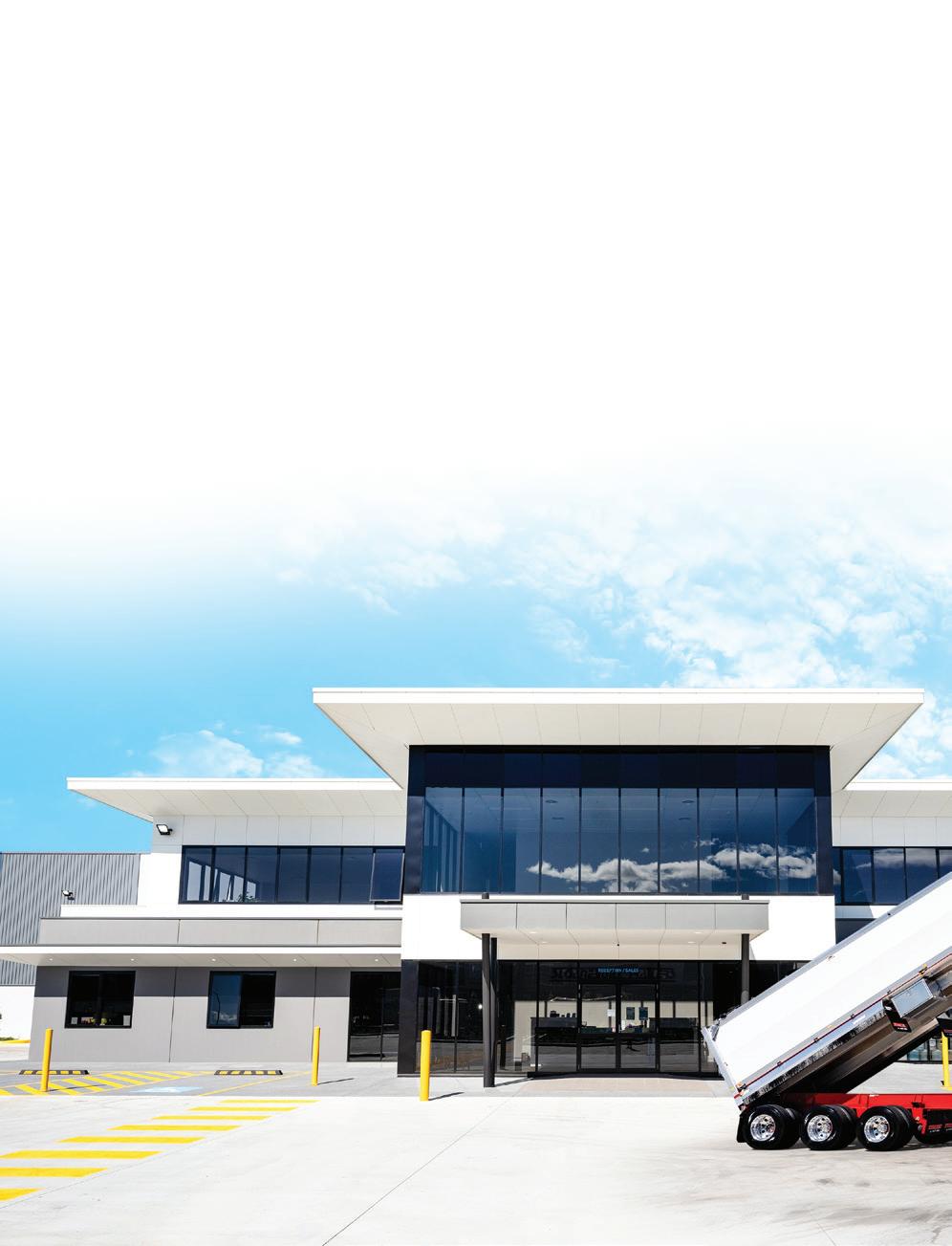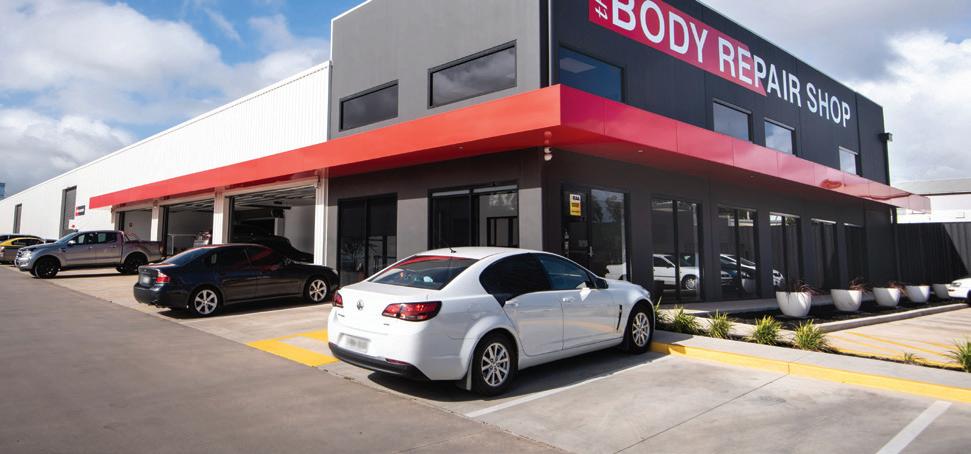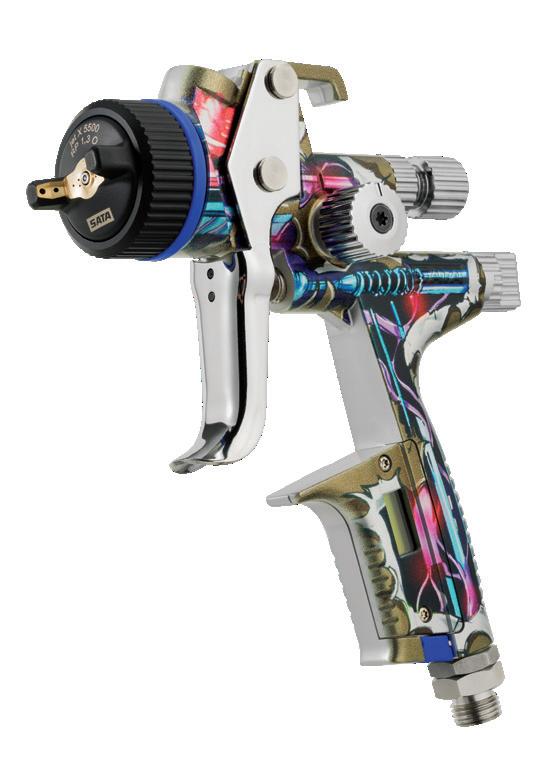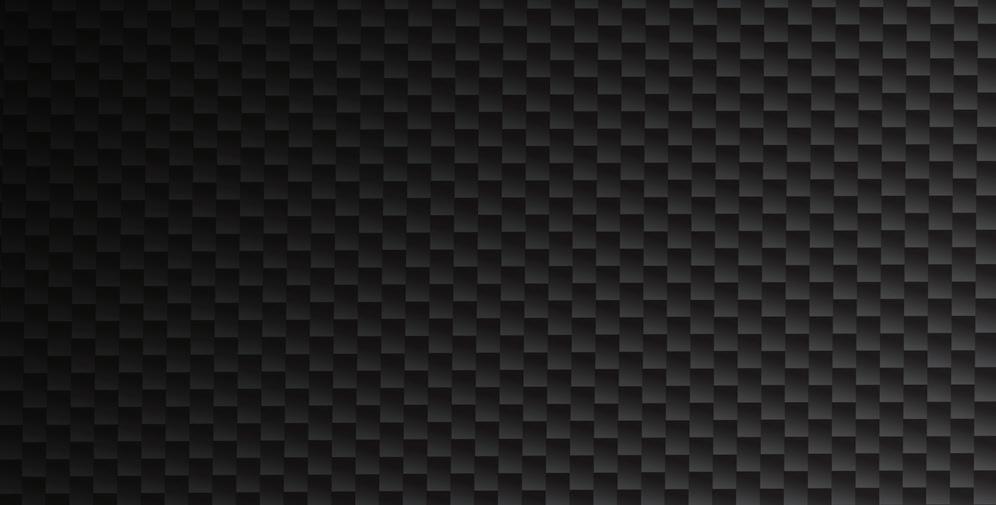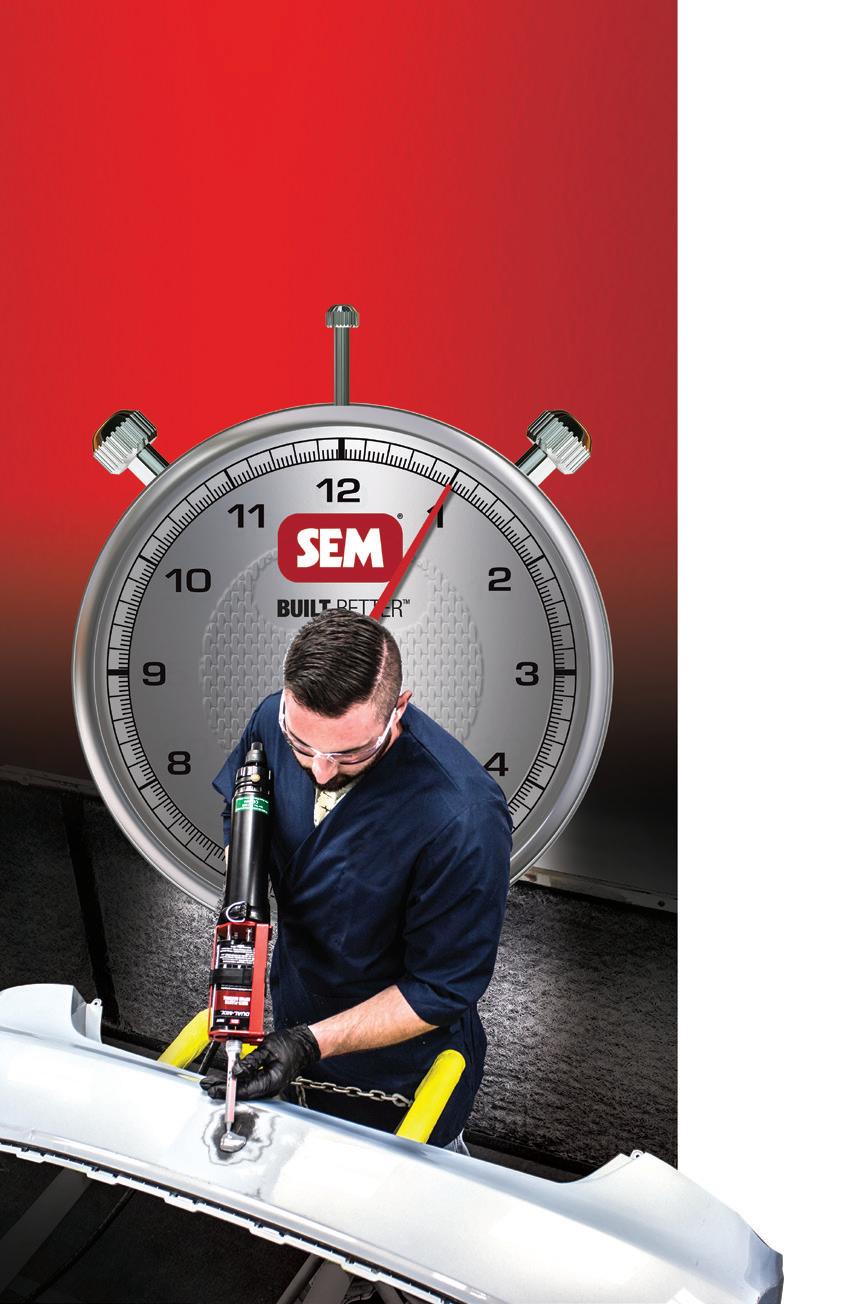
18 minute read
The complete package
Already renowned for its quality smash repairs and epic custom builds, Matamata Panelworks is now giving Kiwis access to authentic right-hand-drive Shelby magic!
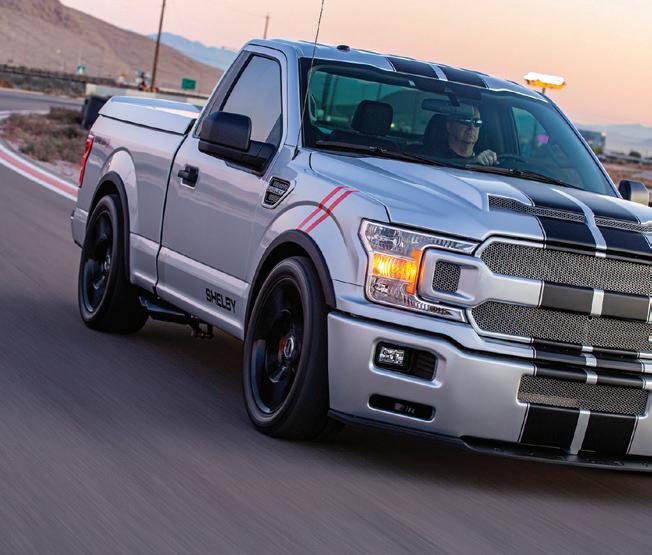
Whichever way you look at it, the credentials of the 6th generation Ford Mustang GT have made it a modern sports coupe favourite. Packing a 5.0 litre Coyote V8 under the bonnet, pumping out 339kW and 556Nm, it’s an impressive blend of looks, sound and performance. However, for some people it’s just not enough. They crave a package that is more unique, with even higher levels of street cred, and this is where Shelby American comes in. Created in 1962 by designer, racing driver and entrepreneur, Carroll Shelby, the iconic organisation has become intrinsically linked to the legendary Mustang nameplate. Today, Shelby offers a sizzling selection of enhanced Mustang models to cater to almost any taste, from the Shelby GT with 480hp to 700-plus horsepower, to the exhilarating Shelby Super Snake and the ballistic flagship, the Shelby Super Snake Wide Body Edition boasting 825 horsepower.
Until recently, these jealously guarded premium services were only available in the United States and only in a left-hand-drive (LHD) car. However, along with the launch of the 6th generation Mustang in 2015, Shelby American decided to expand its footprint outside of the US by partnering with high calibre businesses to establish a very select group of specialist Mod Shops and Carroll Shelby stores around the globe. For Malcolm Sankey, owner of Matamata Panelworks (located a couple of hours drive south of Auckland), it presented a once in a lifetime opportunity to join this exclusive coalition and build these ultra-desirable machines for Kiwi enthusiasts. “Designing, fabricating and building cars has been a passion of mine since the day I was born so, when the latest Mustang was launched in New Zealand in right-hand-drive and I had customers encouraging me to partner with Shelby, the timing seemed perfect. I already had a contact at Shelby American to start the process but I was very busy running our regular restoration, custom and smash repair work so I really needed someone to push it forward. As fate would have it, I managed to get Ross Prevette onboard and that has worked
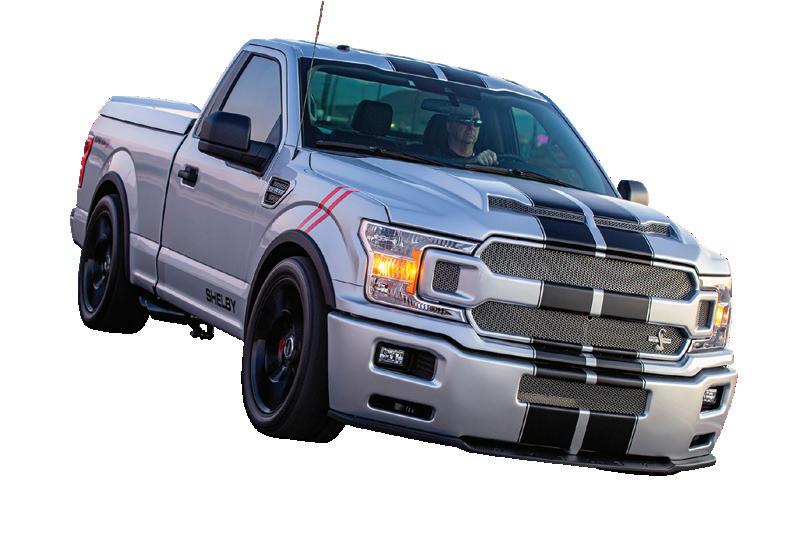
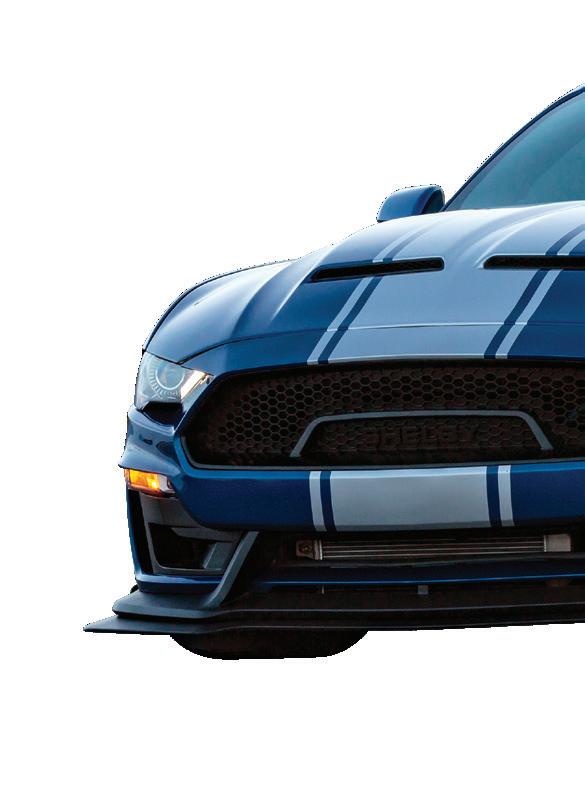
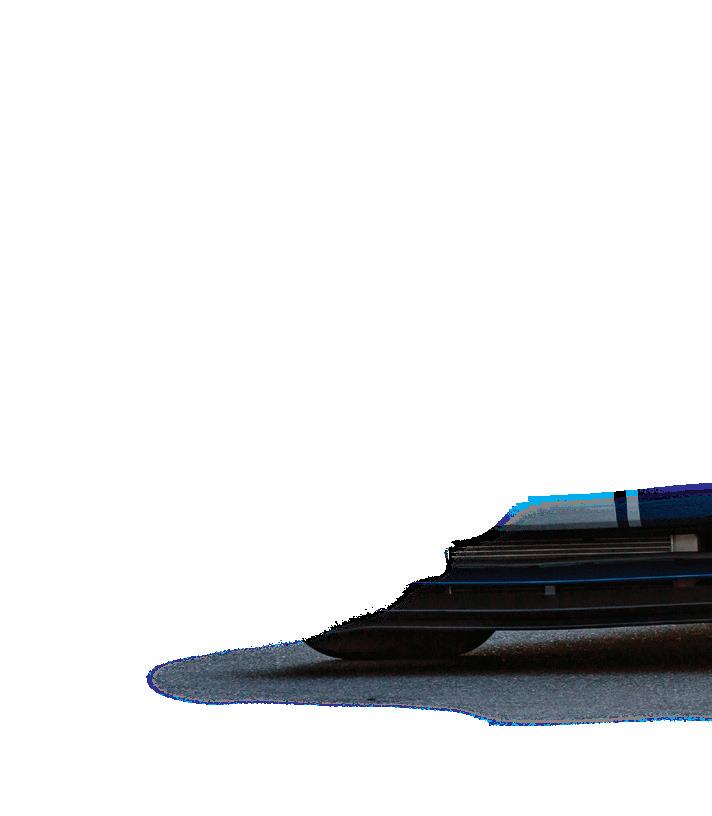
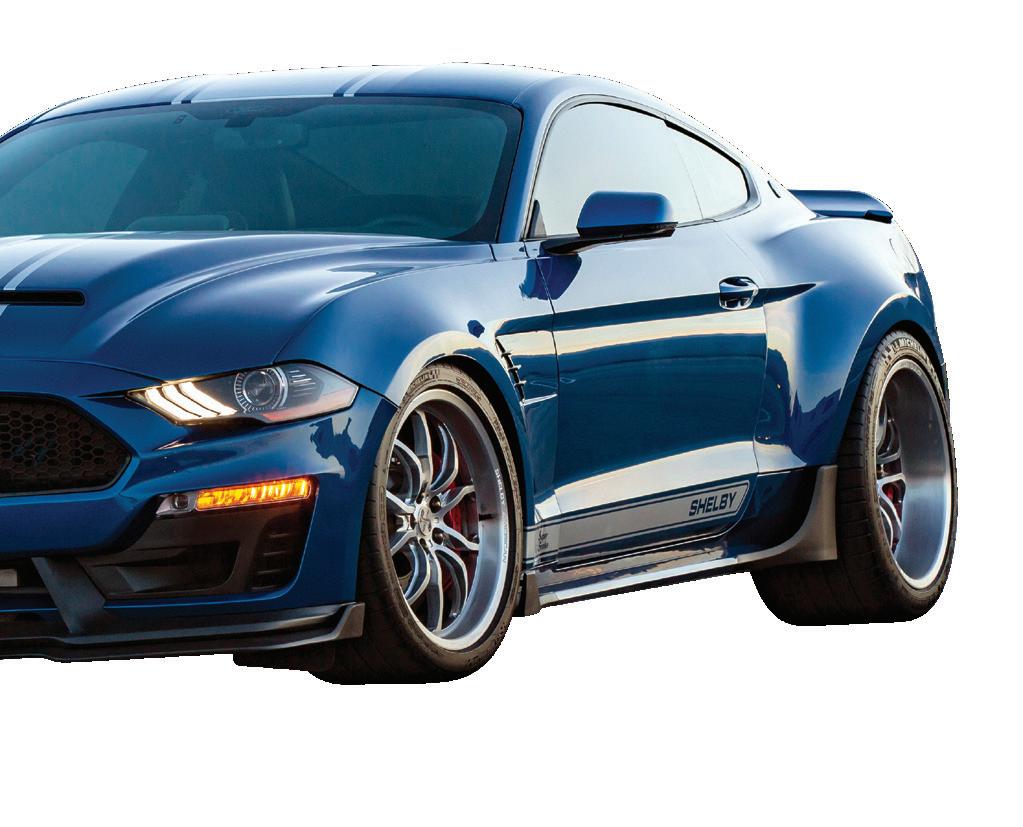
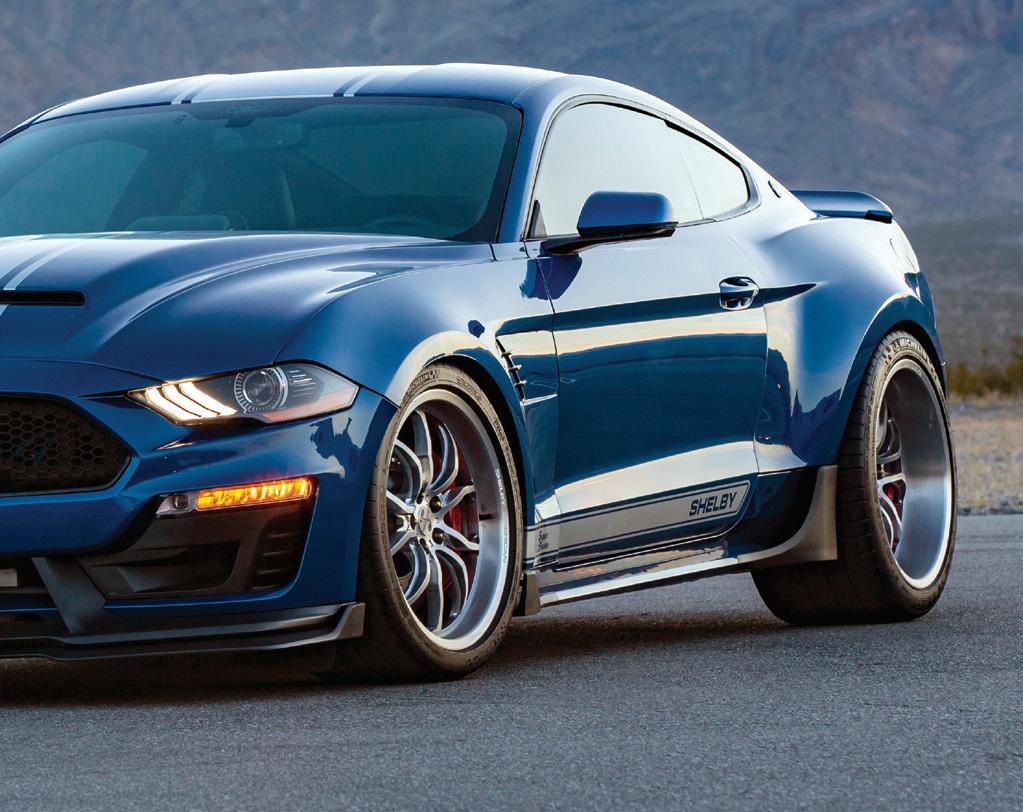
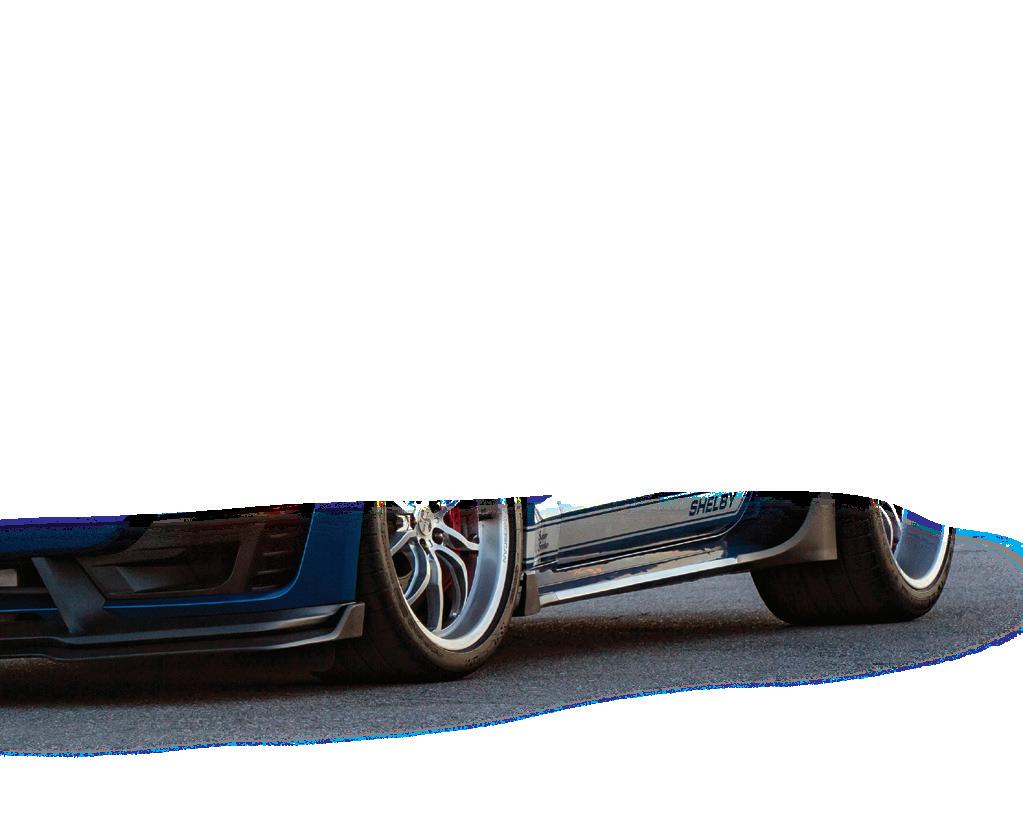
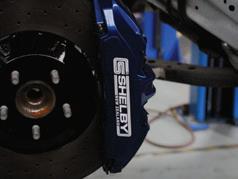
amazingly well. Shelby American are extremely careful about who they partner with but I have been fortunate to have the right people around me, with the right capabilities to prove to Shelby that we have what it takes. Not only did we get the contract to build Shelby Mustangs, it also covers the truck range – the Shelby F150, Shelby F150 Super Snake, Shelby F150 Super Snake Sport and the Shelby Raptor. Then, since meeting everyone over at Shelby American, we also picked up the Shelby Heritage Series – Shelby Cobra, Shelby Daytona Coupe and Shelby GT40. At Shelby American, they have recognised how New Zealanders have been part of the Carrol Shelby story.”
According to Malcolm, his company’s complete package of skills, services and support played a key part of securing the contract. This includes his team’s impressive skillset and craftsmanship, the systems they have in place and his choice of PPG – the brand chosen by Shelby American and used at Ford’s Flat Rock Assembly Plant where the latest Mustang is built.
“We have been using PPG in the paint shop since day-one of the business. These days, we use PPG’s Envirobase (High Performance) waterborne system – it’s easy to use and the colour matching is great. Whenever a new product or colour comes along, the PPG team are here to update us and help with any tips, training or demonstrations. From the moment we said we were setting up Shelby New Zealand, PPG has been fully supportive with our PPG Territory Manager, Dave Mills, working hard to help wherever we need it.”
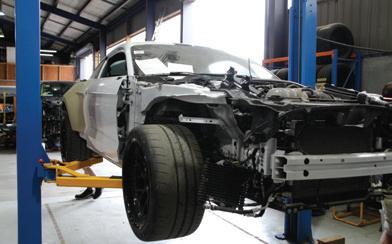
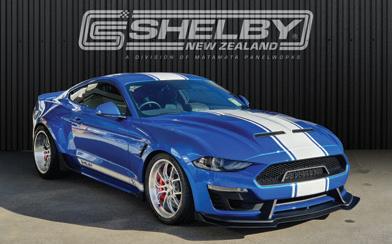
The complete package
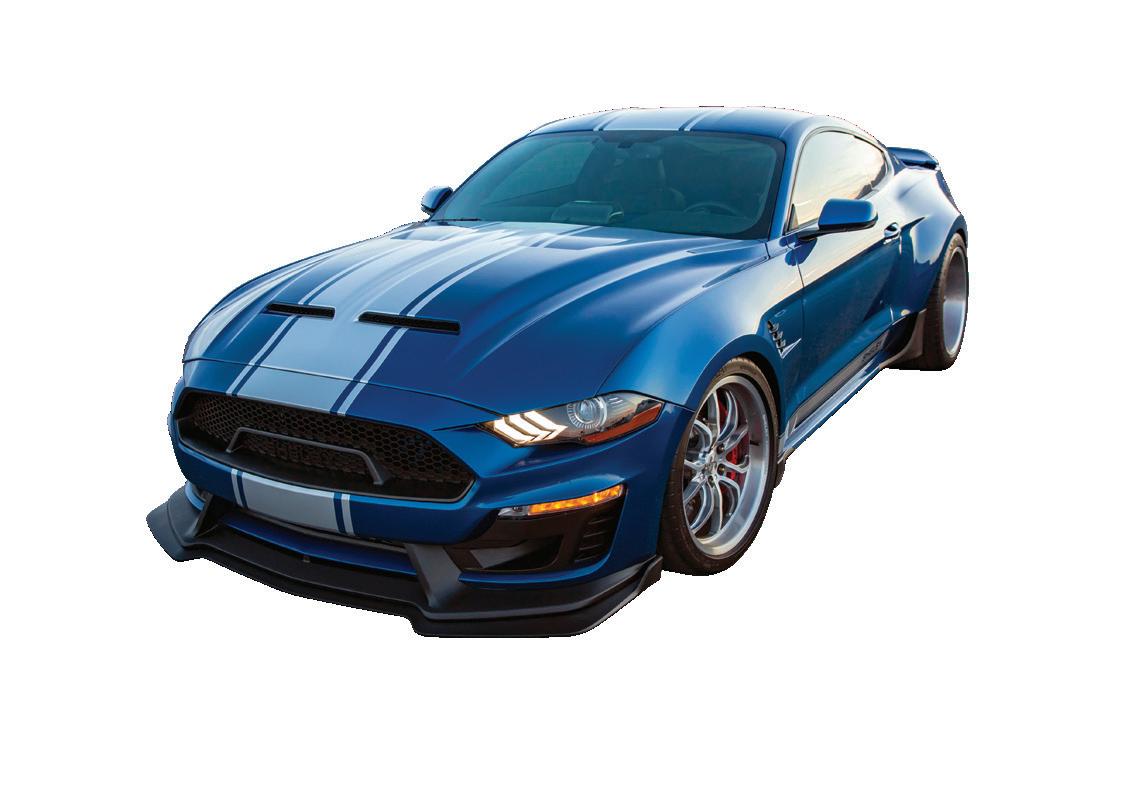
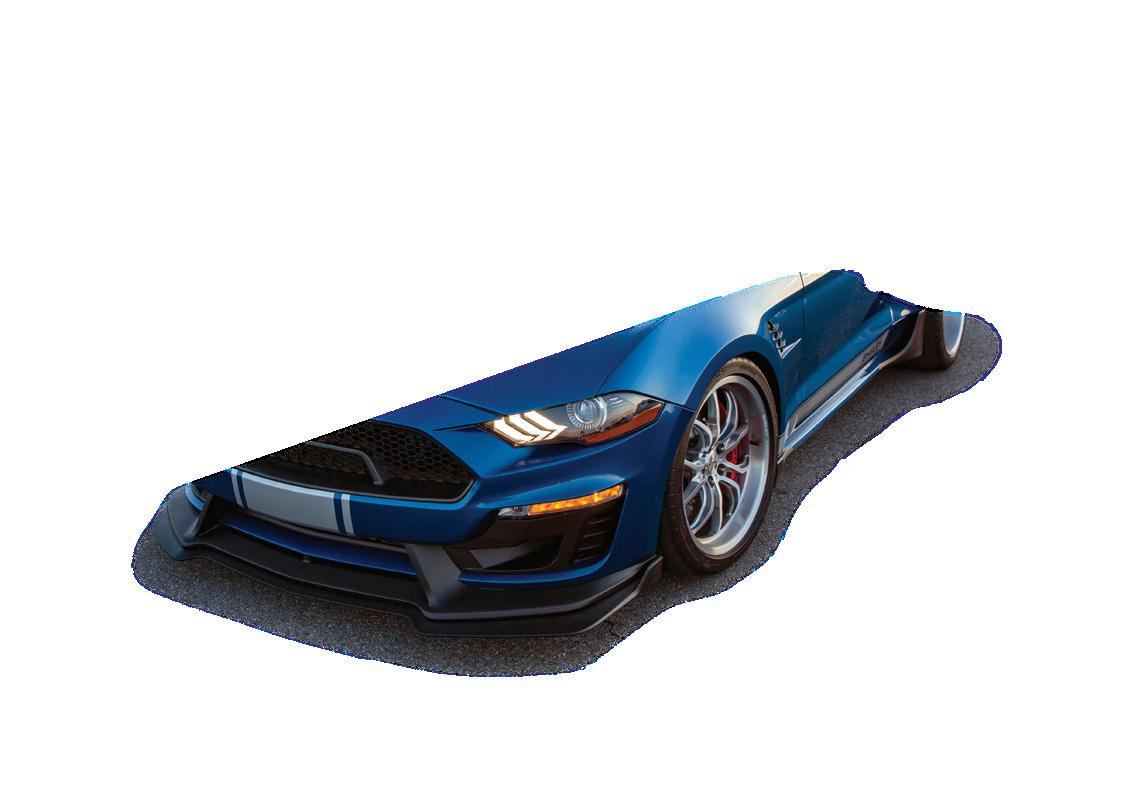
With a workshop that already housed a collision repair section, a restoration / custom section and a paint shop, the first task was to perform a major clean and rationalisation in order to provide dedicated space for constant Shelby production. In the longer term, plans are in place to construct a dedicated Shelby workshop and showroom adjacent to the existing Matamata Panelworks facility. Taking on the Shelby partnership also meant increasing staff numbers from the 20 highly skilled staff the business already employed. Interestingly, publicity surrounding Shelby New Zealand has made that task a little easier with people actually approaching the business because they want to be part of it.
Along with Shelby’s stamp of approval came the immense responsibility to ensure the coveted machines being built at Shelby New Zealand exactly matched those rolling out the door at Shelby America. This saw Malcolm, Ross Prevette and two other staff members undergo intensive training working alongside the production floor crew at Shelby America to learn the exacting processes and procedures. During that time, Malcolm says he took over 980 photos and videos for future reference. Ultimately, this
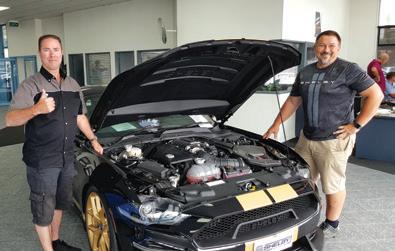
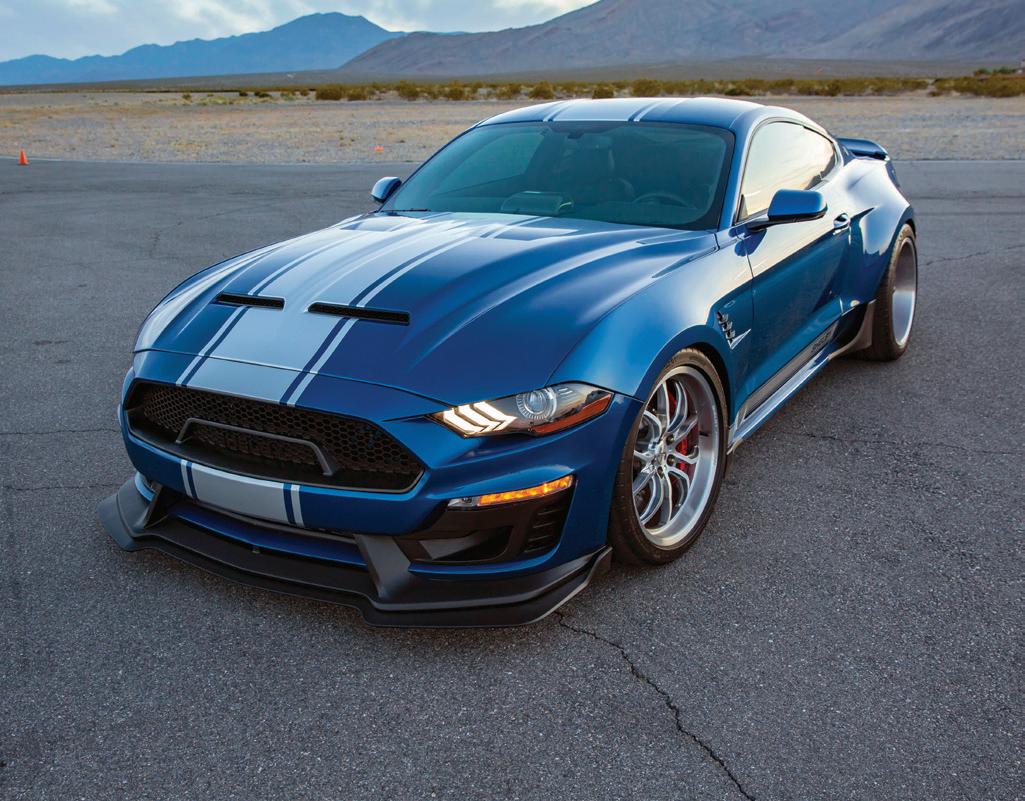
DRESSED TO IMPRESS
Build time for the various Shelby models start at about 10 days for a Shelby GT and extends to around a 40-day turnaround to complete the heavily modified Shelby Wide Body Super Snake. Depending on the model and options, each car comes in for a host of upgrades aimed at boosting performance, luxury and the all-important visual impact. Malcolm’s skilled team swings into action making a host of body changes.
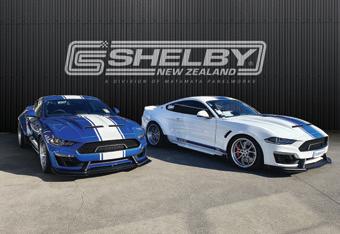
“For a Shelby GT we are talking new grille, bonnet, side skirts and rear spoiler and it’s all done in PPG Envirobase. We mix the colours straight off the PPG PaintManager XI system and we have not even needed to blend anything – it has been a perfect match. When it comes to the Shelby Wide Body Super Snake, Shelby America were familiar with the fabrication skills of our team and were comfortable trusting us with the modifications. Part of the transformation process means cutting off the outer skin of the rear quarter panel. We then refabricate the inner guard to meet the wider arch of the new rear quarter. From there we fit the ‘Wide Body’ panels that extend the width by 100mm to cover the wider rear track. Because there are so many modifications, almost the entire car is painted as part of a Shelby Wide Body Super Snake build.”
attention to detail is being applied to every car built by Shelby New Zealand. In turn, this gives it the right to fit a unique Carrol Shelby Manufacturing plaque to each vehicle with the number recorded in the official Shelby register which confirms the authenticity and specification of each and every genuine Shelby vehicle.
“The sign off processes and documentations are not something Shelby takes lightly – there are strict protocols for absolutely everything! A car has to be completely finished, with everything ticked off, before they will send out the Carrol Shelby Manufacturing number and plaque to be fitted to the car.”
Despite all this, he says, some people will argue that these cars are somehow less than those from the US.
“You can’t make everybody happy. You get the staunch believers who say a car built here is not a Shelby because it’s not LHD and it’s not built in America. Fortunately, the vast majority of people just love them and say ‘wow, what a car’!”
After throwing open the doors to Shelby New Zealand in October 2019, enquires and orders have been off-the-chart. And rather than slowing interest, the country wide lockdown due
NEXT GENERATION to the COVID-19 pandemic,
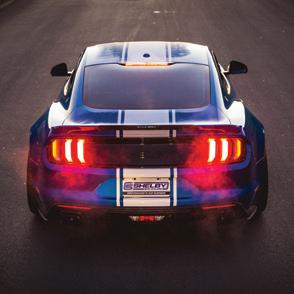
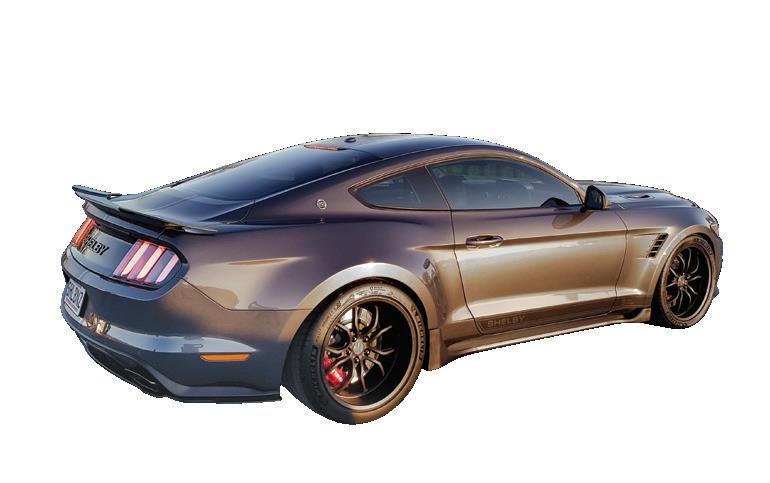
Cars aren’t Malcolm Sankey’s only passion – he is just as passionate about skill development. “Going forward, we are looking at different ways to offer an apprenticeship or some sort of scholarship tuned to this type of work. I have a great bunch of skilled people who love doing what they do but we need to pass on the skills to the next generation. It’s about finding youngsters with the right drive and passion and training them in the correct ways to do things. If not, who is coming through to carry on once we are gone?” actually accelerated enquires as people had more time to research their dream car. Shelby New Zealand is now setting to work on a backlog of Shelby builds, including no less than six Wide Body Super Snakes. “Customers have two options. They can come straight to Shelby New Zealand and Ross will help them through the specification and build process or they can go to any Ford dealership in the country, ask to look at a Shelby and Ross will be in contact. Depending on what option boxes the customer ticks, prices range from around NZ$132,995 to roughly NZ$235,000 which includes the price of the Mustang GT they are based on. These are rare and exotic cars, ready for New Zealand roads which you can’t get anywhere else in the world. Personally, I have always been old school when it comes to cars but I have turned a corner with these late model Shelby’s. The more I work on them and see how they perform and handle, the more I have to say ‘Wow!’”
From the establishment of Matamata Panelwork’s longstanding reputation through to the new partnership with Shelby America, Malcolm has more reasons than ever to be proud of his team and what they have been able to achieve.
“Behind me is a family and a group of staff who are incredible. Together, we have managed to open doors that have taken us to some fantastic places. Part of the reason why we have gotten to where we are is our willingness to learn and explore all the avenues. It’s humbling and a big honour to be associated with the legendary Carroll Shelby. It’s something where I wake each morning and have to pinch myself to believe it!” R
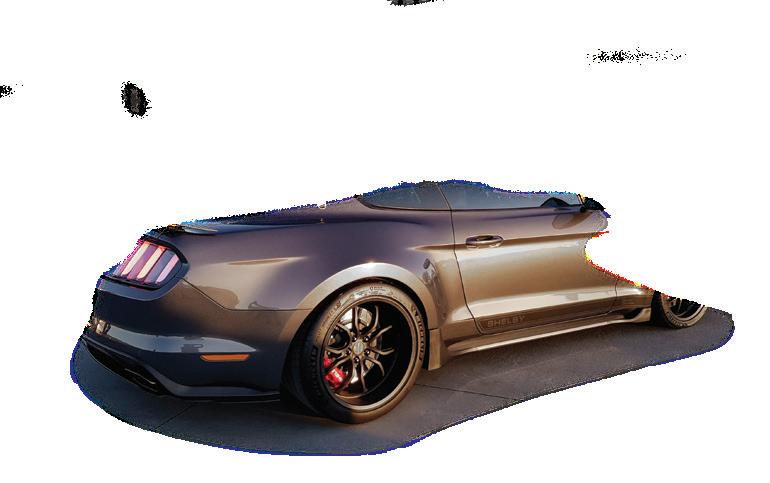
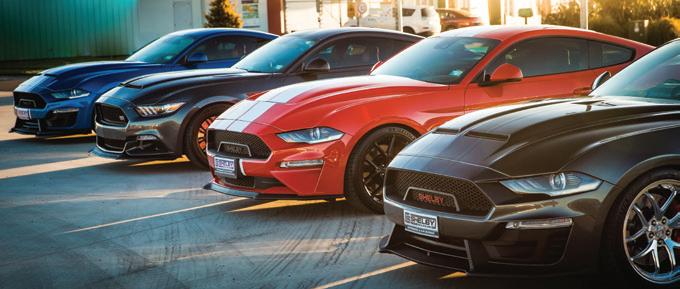
Air superi rity
After investing in a quality booth and spray guns, along with a decent compressor with plenty of capacity, don’t forget the booth air regulator / filter unit, says John Hristias, PPG Business Support Manager Asia / Pacific.
It’s a bizarre situation we see all too often. A collision centre will spend significant money to ensure its air compressor is up-to-date, the booth is well maintained and the painters have top-notch spray guns but then become total cheapskates when it comes to installing a booth air regulator / filter unit that can handle the task. While the compressor, the booth and the spray guns are all important factors, I would argue that the booth regulator / filter is at least as critical, if not more so.
Powering your spray gun
When you stop to think about it, the compressed air supply is actually the only thing powering your spray gun. You can go to the effort of choosing a quality spray gun, such as the latest SATAjet X 5500, fitting it with the appropriate nozzle set and then adjusting it to the perfect application settings but that can all be undone by one thing – the booth regulator / filtration system. A cheap unit can impact in a number of ways: • Air quality – When a problem arises in the spray booth, the tendency is to always blame the products being used. However, when you consider how much effort paint brands put into testing and manufacture, it’s rarely the products. Just a tiny amount of contamination – oil, water, etc – getting through the filter and into the paint layer and can cause issues. Generally,
contaminants are virtually invisible to the technician but they can lead to issues such as delamination and stone chipping. • Air quantity – When you pull the trigger on your spray gun, you need to know your compressed air system can keep feeding it with the required volume and pressure to perform correctly. Typically, cheaper booth regulator / filter units only deliver 30 cubic feet per minute (cfm). Plug in a HVLP spray gun (approx. 15cfm) and an air hood (approx. 17cfm) and you are already over 30cfm! However, invest in a high quality
SATA three-stage regulator / filter system and you get a unit that delivers 90cfm of volume very close to where it’s used.
You actually get faster flash-off because the paint material is more finely atomised and clearcoats, in particular, are glossier.
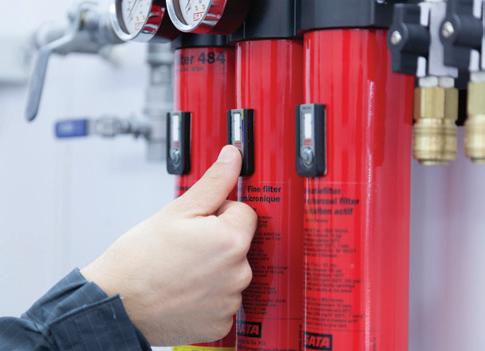
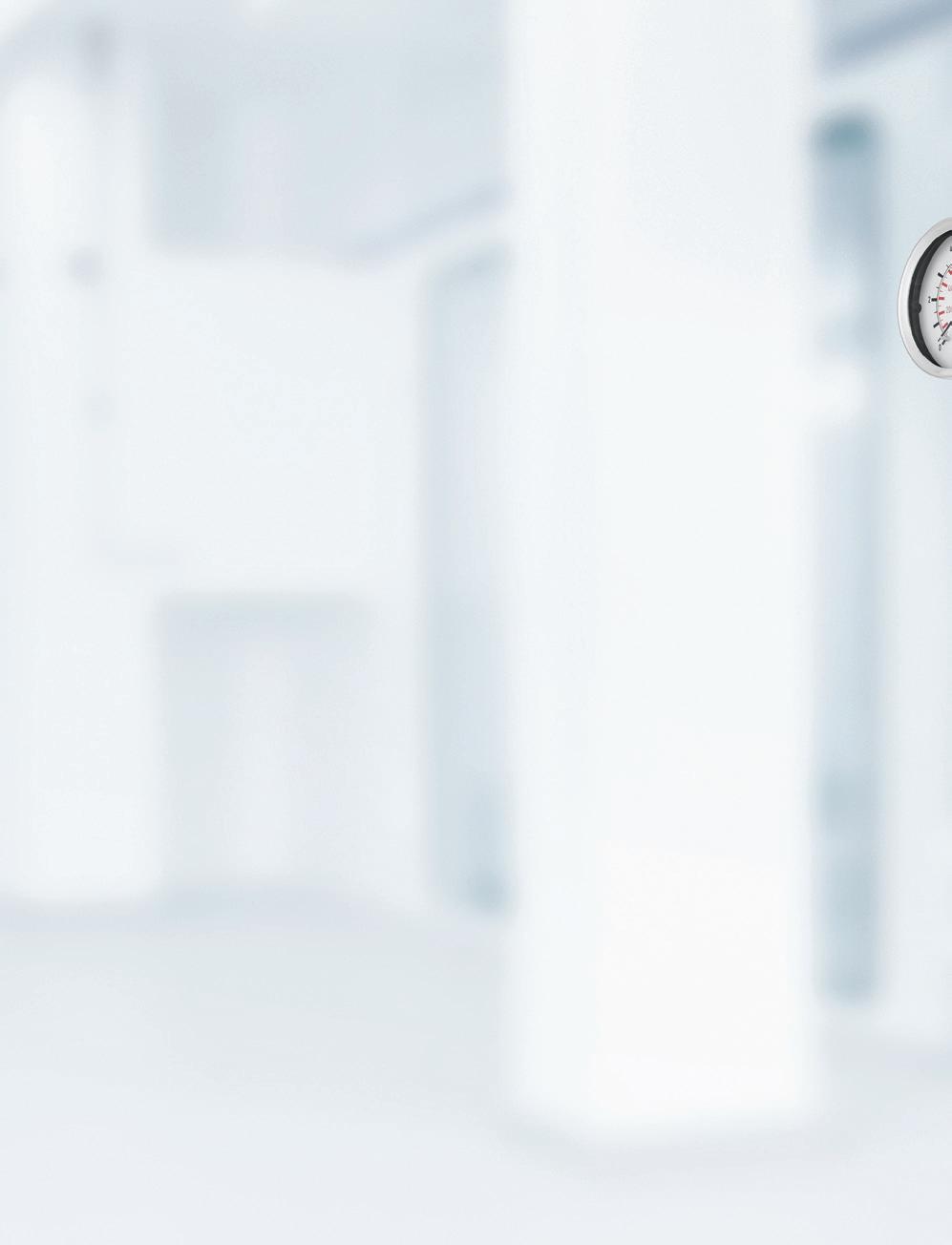
A breath of fresh air
A key point that should never be forgotten when choosing a booth regulator / filter system is that it also supplies the breathing air for painters. This is where a little pennypinching can risk health. SATA’s range of regulator / filter units are not only designed to deliver the air volume and quality that modern refinish systems need (waterborne or solvent-borne), they are also capable of delivering technically pure air for painters to breath. SATA actually launched its first air filtration unit shortly after its first ever spray gun, back in 1925. Since then it has been at the cutting edge of filter technology and it’s easy to see by looking at the latest SATA 400 Series. For a start, SATA filter cartridges are significantly larger than conventional ones (up to half as big again) which means they hold a large volume of air in reserve so you get consistent airflow. For the second ‘fine filter’ stage, SATA uses paper which is state-of-the-art. The paper is folded over
and over to create much more filter surface area – more than three times that of a conventional cartridge! A triple stage filtration unit is required for waterborne and that adds an activated charcoal cartridge to remove any traces of oil or solvent vapours.
A clever investment
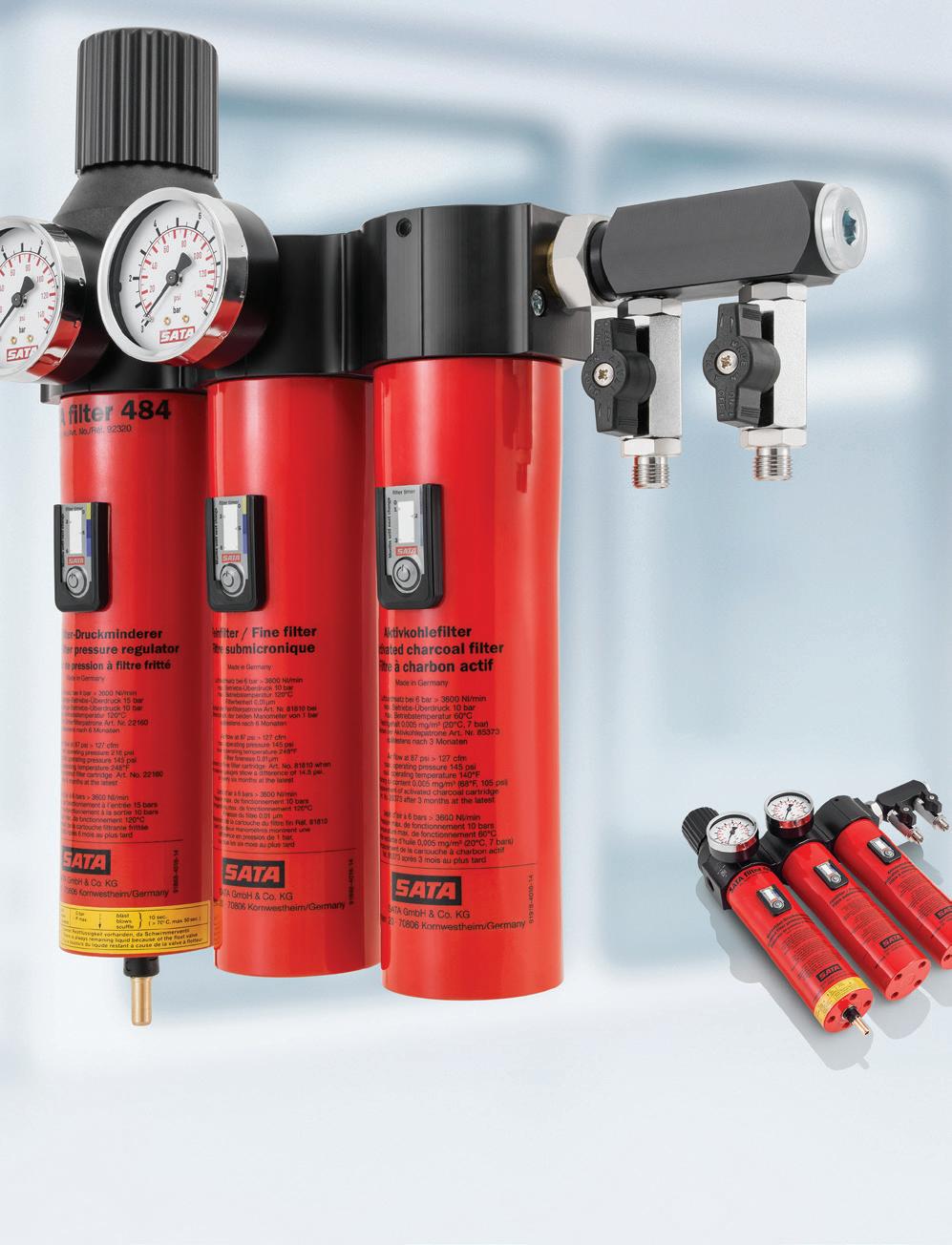
When you do the math, stepping up to a high-quality booth air regulator / filter system, such as the SATA 400 Series, is a cheap overall investment for the business. For instance, if your collision centre processes around 20 jobs per week, the annual scheduled replacement cost of cartridges in a SATA three-stage filter unit is only around $1 to $2 per job! Considering what just one rework costs or all the issues it causes if paint technicians get sick, this really is an insignificant cost. And it’s not just the time, materials and frustration of the rework, itself, it’s also the job you could process while the rework is being done.
Maintaining the standard
Even high-quality filter cartridges won’t last forever and will need to be replaced. However, as the calculations point out, the overall cost is not expensive in terms of purchase price and especially not if you throw in the cost of the odd rework. As part of the installation, it’s vital to set up a maintenance schedule (and someone responsible for it) to ensure filters are cleaned or replaced at their specified intervals. SATA filters include a handy indicator which clearly shows how long until the cartridge requires replacement – once it turns completely red, the cartridge should be changed. R
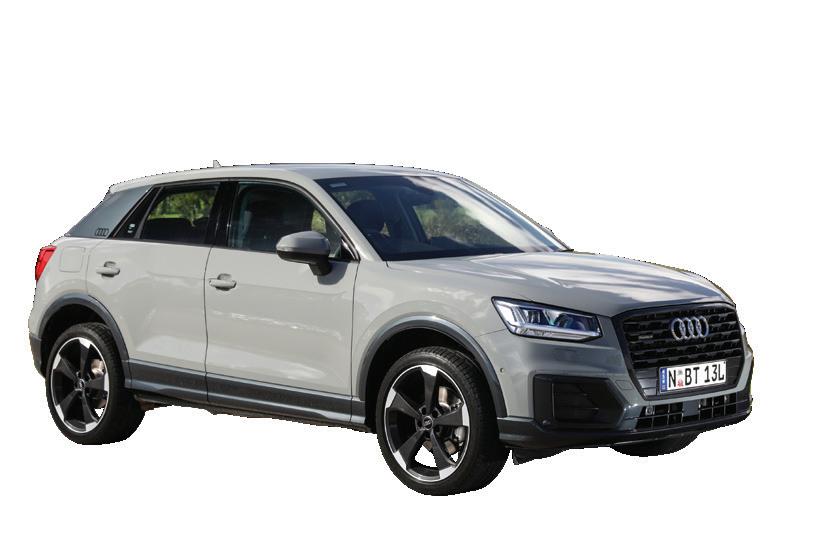
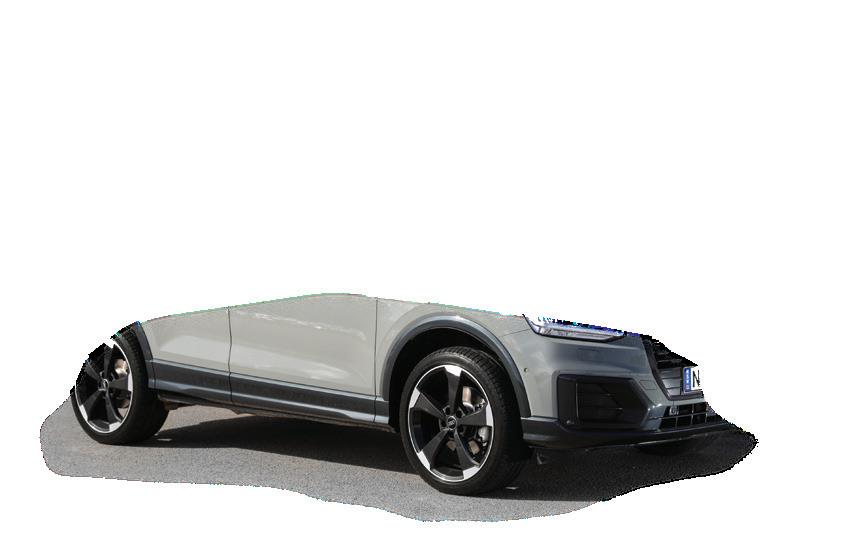
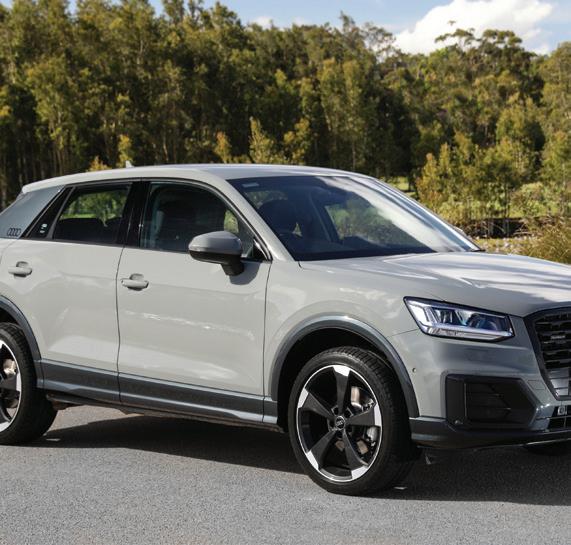
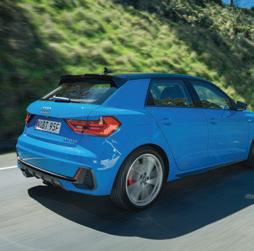
T4903 High Performance Blender
Pastel blending to the Envirobase High Performance range. Its primary role is to give refinish painters a convenient, easy to use and highly effective solution for dealing with pastel blending solution follow and that means dealing with any consequences it might cause. In the case of these latest pastel colours, the issues have issues. When you start to blend a colour and realise that it’s not going to achieve a good enough match, this is the time to switch to a T4903 High Performance Blender process in come when attempting to blend them which order to make the halo issue disappear.
As the rise of modern pastel colours creates a subsequent increase in blending issues, PPG’s T4903 High Performance Blender is here to provide a quick and effective solution.
Check out the new car colour catalogue for many of the popular global brands and you will see the appearance of a growing number of solid pastel-type colours. From light blues and shades of beige to creams and greys, vehicle manufacturers are following this current trend to ensure their customers can drive their new vehicle away in the latest, in-fashion colours. Where the OEM factory colours go, the refinish industry must is why PPG has responded with T4903 High Performance Blender as part of the ENVIROBASE® High Performance range, the region’s most popular waterborne refinish system.
Pastel blending issues
Without getting too technical, the simplest way to explain the root of these blending issues is that it can be traced back to the fact that each pigment has a different specific gravity or weight. When these pigments are mixed into a colour formulation and sprayed onto a vehicle, their weight makes them react in different ways. As they hit the panel and start to dry, the heavier pigments tend to sink while the lighter pigments tend to rise to the top. It’s important to note that this is a phenomenon that has always happened, it’s just that it tends to have more of an impact on these current pastel colours where it can create a halo type appearance around the blend edges. This is actually quite a versatile new addition • Start by separating some colour from the formulation and this will be used for blending. This is done because adding
T4903 High Performance Blender will alter the original colour to one which is perfect for blending but not to use over non-blend areas. For example, it’s a good idea to keep some of the original colour formulation in case it’s needed for a touch up on the current vehicle or if another job in the same colour comes in. • Take the separated colour and mix it 1:1 with T4903 High Performance Blender to create an RFU blending solution. This is where using SATA RPS cups makes the job even easier and straight forward. • Application is simple. Using the T4903
High Performance Blender mix, just extend the blend area a little bit out past the current edge and a little bit back into the original colour and that is it! Any haloing should disappear straight away.


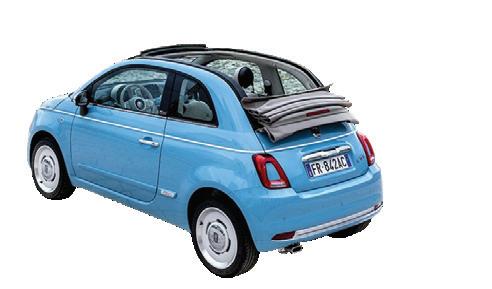
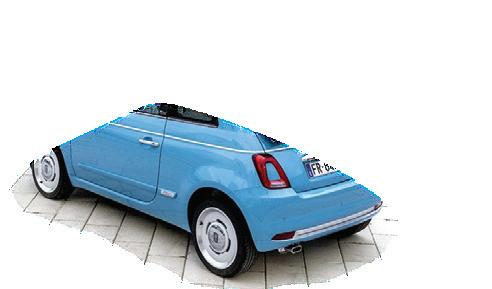
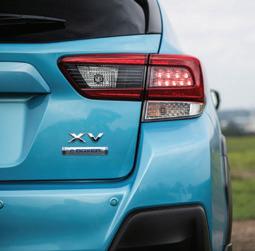
Other uses – three-layer pearls
When you think about it, in most instances the groundcoat layer of a threelayer pearl finish tends to be a solid pastel colour. As a result of this, it’s also the type of finish which traditionally suffers from the appearance of halos. It’s also where T4903 High Performance Blender offers a handy solution. Simply use the same method as described above to separate an amount of colour, mix it 1:1 with T4903 High Performance Blender and apply it around the blend edges to help ensure haloing doesn’t grin through the final finish.
Other uses – Monday to Friday cupboard colour extender
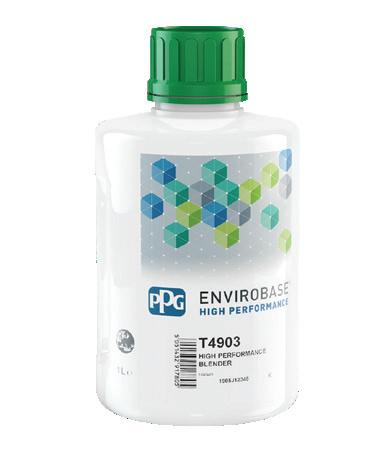
The versatility of T4903 High Performance Blender means is not limited to the blending process for pastel colours, it can also be used in conjunction with your Monday to Friday cupboard*. Sympathetic colour from the Monday to Friday cupboard is typically used as the initial groundcoat on a job to save on the amount of colour formulation required for the actual job. However, say you need 200ml of sympathetic colour for a particular job but you only have 100ml in the cupboard? In this instance, T4903 High Performance Blender can easily be added 1:1 to create a colour extender. It’s another way of saving on job cost and mixing time and it doesn’t matter that it changes the colour because, in this case, it’s only being used as an initial groundcoat which will be covered with the actual vehicle colour.
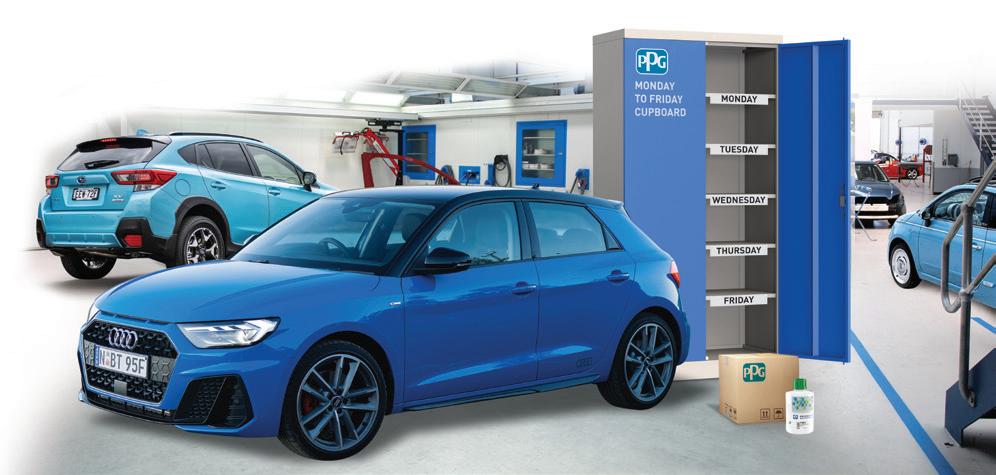
For more information on how to integrate T4903 High Performance Blender into your paint shop processes, speak to your PPG Territory Manager or Training Manager.
*A Monday to Friday cupboard is a simple and cost‑effective way to make use of the small amounts of colour which are left over after each job and are often simply thrown away. For more information about how to set up and use a Monday to Friday cupboard, speak to your PPG Training Manager or MVP Business Solutions Manager. R

